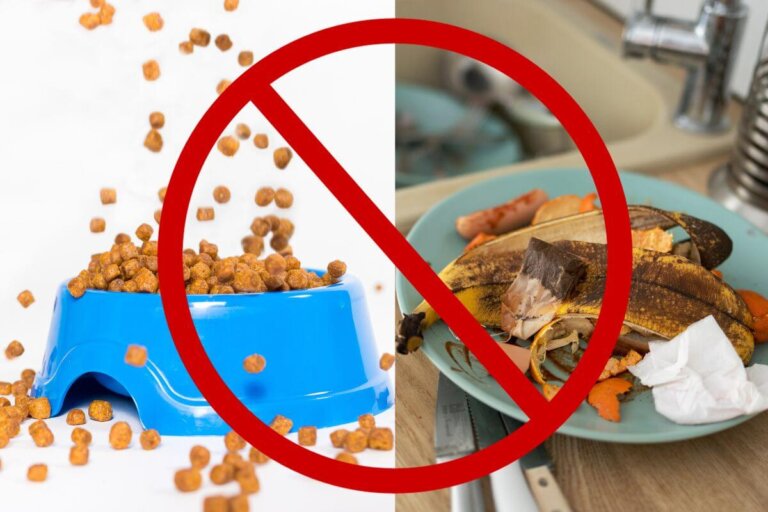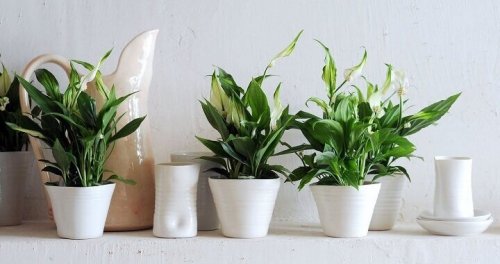The Top 10 Things That Attract Moths and Other Bugs to Your Home

Moths, cockroaches, and ants look for places to live, feed, and reproduce that are conducive to them. That’s why it’s likely that, without wanting to do so, we are providing this habitat, which can lead to pests that are difficult to eradicate.
Moths are attracted to food debris, clothing, and humidity in the environment. Keeping places sanitized and closets tidy is a first step to avoid their appearance. However, there are more elements to pay attention to.
These things attract moths, ants, and cockroaches to the house
There are two main groups of moths. On the one hand, there are pantry moths, which are large in size with bronze tones attracted to different grains.
The other group are clothes moths, which are whitish in color and with a preference for textiles. This type of moth causes holes in garments. With this in mind, let’s take a look at what attracts each group to the home and what other bugs can appear for the same causes.
We think you may also enjoy reading this article: How to Get Rid of Indoor Plant Insects Using Vinegar
1. Light
Lighting is usually an attraction for pantry moths. They identify a light bulb and pursue it by entering homes through door and window openings.
Once inside, however, they will seek the opposite: darkness. But the first stimulus to get there is the light that guides them. For this reason, it’s usually recommended to use dim lighting around homes, preferring less power in the spotlights installed in verandas, entrances, and garages.
2. Things that attract moths: Stored food
Pantry moths are known by that name because their main target is the food stored there. In particular, cereals and cereal products such as oats, rice, dried pasta, or flour. They approach by smell and are likely to lay their eggs, generating larvae and spoiling the food.
3. Pet food

In addition to human food, they are also attracted to dog and cat food. Therefore, it’s important to store this product tightly closed and under airtight lids. It isn’t a good practice to leave what has not yet been used in the bag in which it was sold.
It’s also a good idea to maintain the hygiene of the pet’s eating area. Picking up the dishes from the floor, washing them, and putting them away would be ideal.
4. Stains, spills, and food leftovers
Food leftovers, stains from sugary drinks, and any sweet residue are magnets for many insects. Especially cockroaches and ants. Keeping the kitchen area clean, including the nooks and crannies between the refrigerator, oven, and cupboard, could make all the difference.
5. Things that attract moths: Humidity
Many pests seek to grow in damp spaces, either because pipes or faucets leak, or because the darkness of a piece of furniture favors the lack of evaporation. Flies, mosquitoes, cockroaches and moths feel comfortable in humidity.
Then, their very presence, their waste, and the conditions of the environment attract fungi. For example, this is what happens behind refrigerators, air conditioners, or on bathroom floors.
Like this article? You may also like to read: How to Safely Eliminate Crickets or Grasshoppers from Your Garden
6. Heat
High temperatures are a major attraction for moths. In summer, crawl spaces, sheds and attics are ideal environments for these pests. Take care to keep these spaces tidy so as not to facilitate their growth.
7. Darkness
Although light may be an initial attraction, moths then feel comfortable in dark spaces. Once inside, they will seek out pantries and closets where there is low lighting, good humidity, and warmth is maintained.
8. Things that attract moths: Clothing and textiles
Clothes moths have a predilection for certain fabrics. The conjunction of the following elements and circumstances facilitates their appearance:
- General disorder. Having a messy closet favors the proliferation of moths since they have more shelters to hide and keep warm.
- Textiles favored by the pest. Some of the moths’ favorite fabrics are silk, wool, linen, and other natural fibers, such as fur. And not only clothing but also upholstery, carpets, and curtains.
- Dirty clothes. Like dirty dishes and food debris, moths are attracted to stains on clothing, such as spills or sweat.
9. Certain plants

There are plants that repel pests and others that attract them. In the latter group are silk flower (Portulaca gilliesii), fireweed (Heliotropium curassavicum), petunia and moonflower (Ipomoea alba). In addition, daisies and pansies attract flies and mosquitoes.
10. Garden decor and features
If you have a garden, it’s a good idea to avoid leaving water and food debris in the yard. Pests look for these items to survive.
Waterers and bird feeders need to be checked frequently. Ideally, have a water circulation system that doesn’t leave water stagnant.
On the other hand, the compost area is a source of insects. It doesn’t mean you have to stop composting, but you do have to pay attention to the arrival of bugs and their possible movement into the home.
How to avoid attracting moths and other bugs into your home
Identifying the main reason that encourages moths and other insects to enter your home is important to take action. Now that you know the things that attract them, the following are essential tips for preventing pests:
- Keep your home clean. Sweep often, vacuum carpets, dust and clean the pantry.
- Try moth traps. There are adhesive products that hold insects when you walk over them.
- Keep food in closed containers. Above all, cereals and their derivatives, giving priority to airtight jars.
- Take out your trash regularly. The accumulation of garbage in garbage cans is a source of food for cockroaches and other insects.
- Pay attention to nooks and crannies. Avoid accumulation of food debris and dirt in baseboards, corners and behind appliances.
- Place repellent plants. Some species, such as lavender, mint, or basil, work as natural repellents for moths, flies, and mosquitoes.
- Use laundry bags. Clothes that are not used on a regular basis can also be vacuum-sealed with bags. They are easy to obtain and cost about 16 euros for five pieces.
We think you may be interested in reading this, too: How to Eliminate Cottony Mealybugs from Your Plants
Maintain proper hygiene and you can avoid things that attract moths
General cleanliness is the most important aspect of avoiding pests in the home. At the same time, order and proper storage avoid spaces conducive to their growth. However, none of these measures may put an end to a pest that’s already made its home in your space. In that case, it’s best to turn to professional pest removal.
All cited sources were thoroughly reviewed by our team to ensure their quality, reliability, currency, and validity. The bibliography of this article was considered reliable and of academic or scientific accuracy.
- Moreno Marí, J., Oltra Moscardó, M. T., Falcó Garí, J. V., & Jiménez Peydró, R. (2007). El control de plagas en ambientes urbanos: criterios básicos para un diseño racional de los programas de control. Revista Española de Salud Pública, 81 (1), 15-24. Consultado el 20 de octubre de 2023. https://www.redalyc.org/pdf/170/17081103.pdf
This text is provided for informational purposes only and does not replace consultation with a professional. If in doubt, consult your specialist.








